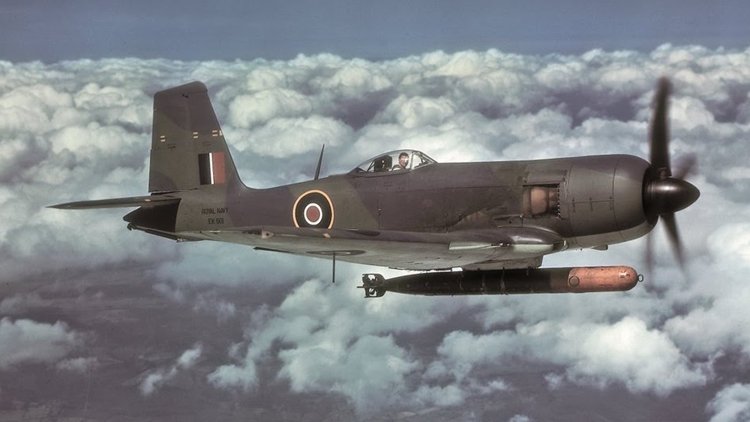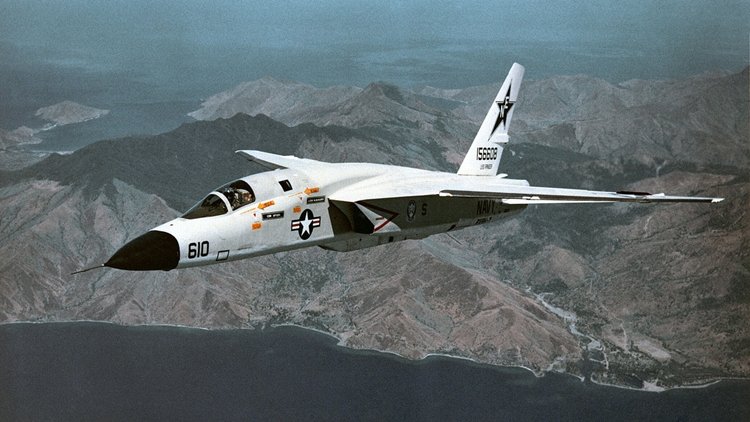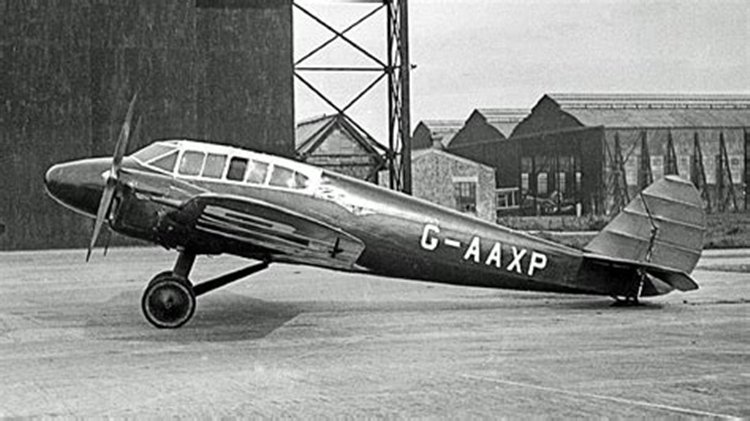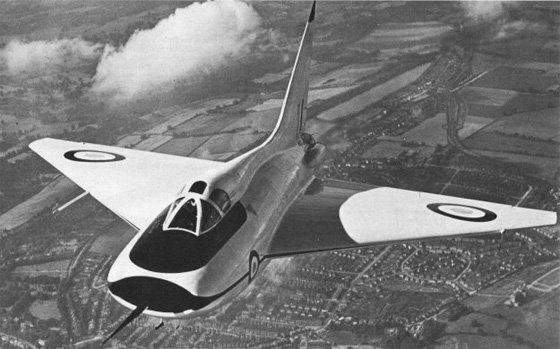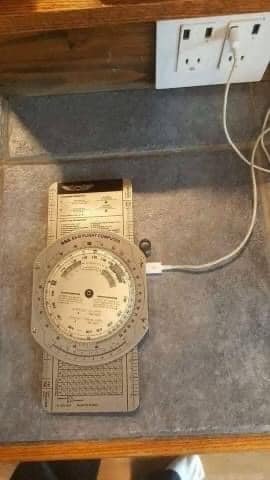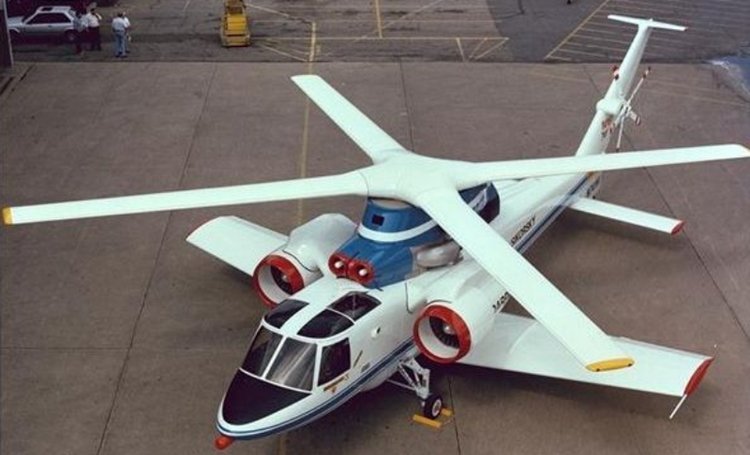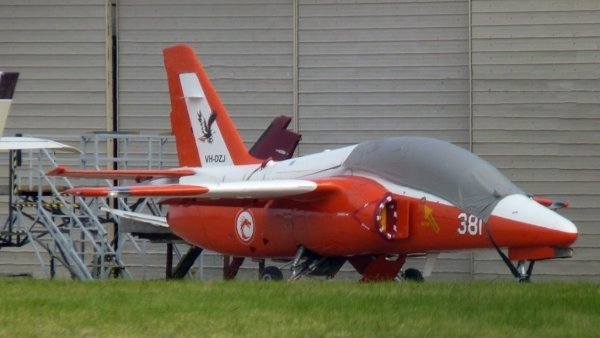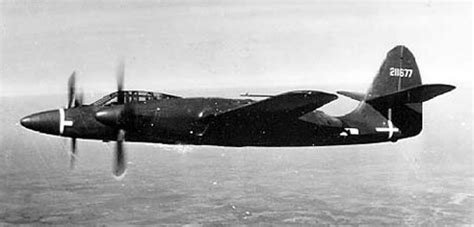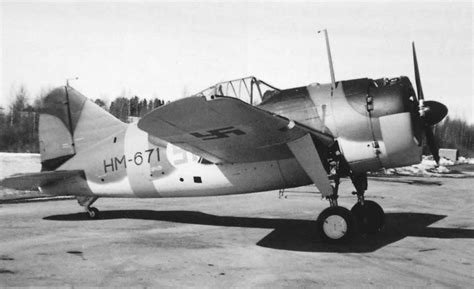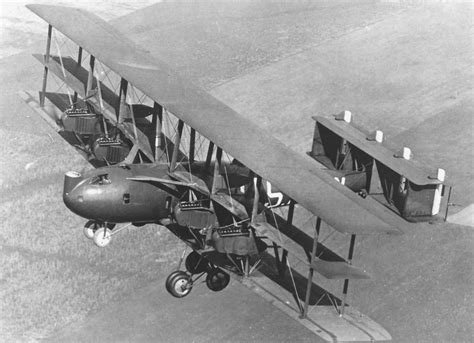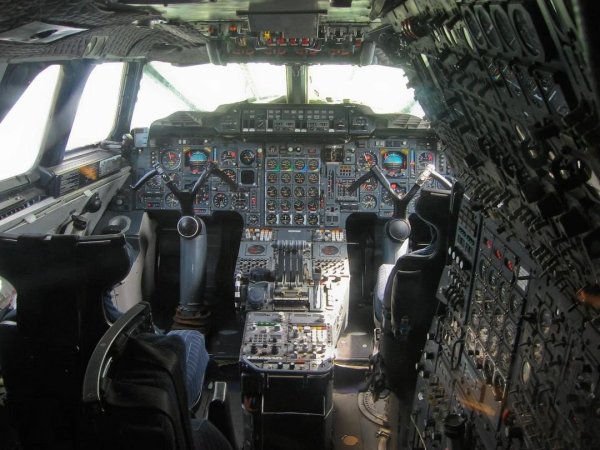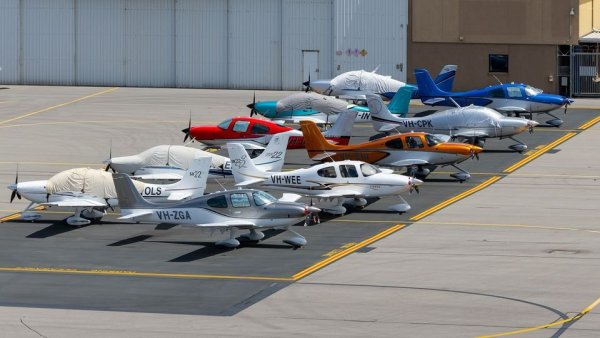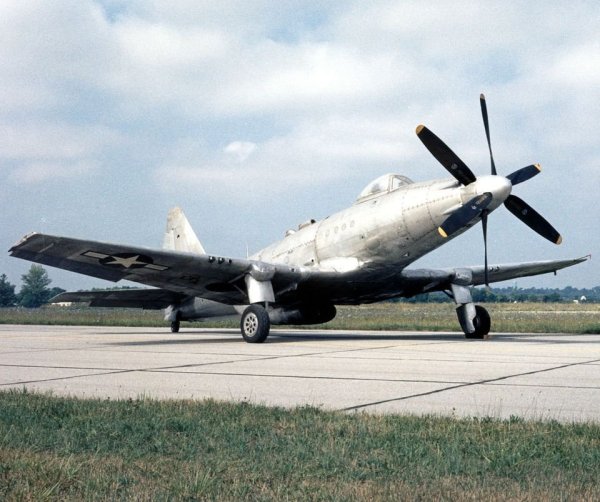-
Posts
7,563 -
Joined
-
Last visited
-
Days Won
67
Content Type
Profiles
Forums
Gallery
Downloads
Blogs
Events
Store
Aircraft
Resources
Tutorials
Articles
Classifieds
Movies
Books
Community Map
Quizzes
Videos Directory
Everything posted by red750
-
The Blackburn Firebrand was a British single-engine strike fighter for the Fleet Air Arm of the Royal Navy designed during World War II by Blackburn Aircraft. Originally intended to serve as a pure fighter, its unimpressive performance and the allocation of its Napier Sabre piston engine by the Ministry of Aircraft Production for the Hawker Typhoon caused it to be redesigned as a strike fighter to take advantage of its load-carrying capability. Development was slow and the first production aircraft was not delivered until after the end of the war. Only a few hundred were built before it was withdrawn from front-line service in 1953. The Firebrand did not see action in World War II, as TF 4s were not issued to 813 Naval Air Squadron until 1 September 1945. The squadron was disbanded 30 September 1946 without deploying to sea. It was reformed with TF 5s on 1 May 1947 and flew them from the carrier HMS Implacable, later HMS Indomitable, until it was re-equipped with turboprop Westland Wyvern attack aircraft in February 1953. 827 Naval Air Squadron received their TF 5 and 5As on 13 December 1950 and flew them primarily off the carrier HMS Eagle until it disbanded on 19 November 1952. A variety of second-line squadrons were issued Firebrands of various marks for training or trials at one time or another. In test pilot and naval aviator Captain Eric Brown's opinion the aircraft was "short of performance, sadly lacking in manoeuvrability, especially in rate of roll". The position of the cockpit even with the trailing edge of the wing gave the pilot a very poor view over the nose, inhibited his ability to view his target and to land his aircraft aboard a carrier, sufficient for Brown to call it "a disaster as a deck-landing aircraft". Variants Blackburn B-37 Three prototypes ordered to meet Specification N.11/40, named Firebrand on 11 July 1941. Second prototype re-built as T.F. II prototype.[15] Firebrand F. I Production variant of the Blackburn B.37 with an order for 50 aircraft to be built at Brough, most completed as T.F. II and T.F. III variants, first nine completed as F. Is. Firebrand T.F. II Improved variant, 12 built from original production branch. Firebrand T.F. III Blackburn B-45, a Centarus VII powered-variant, two prototypes to S.8/43[16] and 27 production aircraft for original production batch. Firebrand T.F. IV (Specifications below) Blackburn B-46, improved variant with 2,520 bhp (1,880 kW) Centaurus IX or Centaurus 57,[16] 250 ordered, but only 170 were completed, of which 124 were converted to T.F. 5 standard, some before delivery.[11] Six were modified and designated as T.F. IV(mod). Firebrand T.F. 5 Improved variant, 124 modified from T.F. IV, two conversions to T.F. 5A. Firebrand T.F. 5A One prototype modified from a T.F. 5 and six conversions from either T.F. IV or Vs
-
The Blackburn Perth was a British flying boat which was in service during the interwar period. It was essentially an upgraded Iris, and hence the largest flying-boat to serve with the Royal Air Force at the time (and the largest biplane flying boat ever to serve with the RAF). The Blackburn R.B.3A Perth was designed as a replacement for the earlier Iris to Air Ministry Specification 20/32. Developed from the Iris Mk. V, the Perth first flew in 1933. It differed from the Iris by replacing the Rolls-Royce Condor engines of the Iris by more powerful Rolls-Royce Buzzards and having an enclosed cockpit for the pilots. Unusually, in addition to its normal armament, the Perth was fitted with a Coventry Ordnance Works C.O.W 37 mm (1.46 in) autocannon in its bows. The Perth entered service with the RAF in January 1934, when the second aircraft was delivered to No. 209 Squadron RAF at RAF Mount Batten Plymouth. Perths remained in service until 1937, being replaced by the Short Singapore and the Saro London. One aircraft was retained by the Marine Aircraft Experimental Establishment until 1938. Only four Perths were built.
-
The Blackburn R.B.2 Sydney (serial N241) was a long-range maritime patrol flying boat developed for the Royal Air Force in 1930, in response to Air Ministry Specification R.5/27. It was a parasol-winged braced monoplane of typical flying boat arrangement with triple tailfins and its three engines arranged on the wing's leading edge. After evaluation, it was not ordered into production and no further examples were built. With development of the Sydney abandoned, construction of a cargo-carrying variant powered by radial engines, the C.B.2 Nile was also ended.
-
The Blackburn B-54 and B-88 were prototype carrier-borne anti-submarine warfare aircraft of the immediate post-Second World War era developed for the Royal Navy's Fleet Air Arm (FAA). They shared a conventional monoplane design with a mid-mounted inverted-gull wing and tricycle undercarriage. The pilot and observer sat in tandem under a long canopy atop the fuselage. The B-54 had a piston engine while the B-88 had a gas turbine driving large contra-rotating propellers. The radar scanner was mounted in a retractable radome in the rear fuselage, behind a long internal weapons bay. The program was cancelled in favour of the Fairey Gannet aircraft.
-
The North American A-5 Vigilante is an American carrier-based supersonic bomber designed and built by North American Aviation (NAA) for the United States Navy. Before the 1962 unification of Navy and Air Force designations, it was designated A3J. Development of the A-5 had started in 1954 as a private venture by NAA, who sought to produce a capable supersonic long-distance bomber as a successor to the abortive North American XA2J Super Savage. It was a large and complex aircraft that incorporated several innovative features, such as being the first bomber to feature a digital computer, while its ability to attain speeds of up to Mach 2 while carrying a nuclear strike payload was also relatively ambitious for the era.[2] The US Navy saw the value of such a bomber, leading to a contract for its full development and production being issued to the firm on 29 August 1956. The type performed its first flight just over two years later, on 31 August 1958. The Vigilante was introduced by the US Navy during June 1961; it succeeded the Douglas A-3 Skywarrior as the Navy's primary nuclear strike aircraft, but its service in this capacity was relatively brief due to the deemphasising of manned bombers in American nuclear strategy. A far larger quantity of the RA-5C tactical strike reconnaissance variant were also procured by the service, which saw extensive service during the Vietnam War. It also established several world records in both long-distance speed and altitude categories. During the mid-1970s, the withdrawal of the type commenced after a relatively short service life, largely due to the aircraft being expensive and complex to operate, as well being a victim of post-Vietnam military cutbacks. For details of development, design, operational history and eleven variants, click here.
-
The Blackburn B-1 Segrave was a 1930s British twin-engine four-seat touring aircraft built by Blackburn Aircraft. The aircraft was designed by the racing driver (and world land speed record holder) Sir Henry Segrave as a twin-engine four-seat touring monoplane. A wooden prototype, designated Saro Segrave Meteor I was built by Saunders Roe at Cowes. The prototype (registered G-AAXP) first flew on 28 May 1930. Development was delayed by the death of the designer on 13 June 1930 in a speedboat accident. The aircraft was demonstrated in Rome to the Italian Air Ministry, and a licence agreement was signed to produce the aircraft as the Piaggio P.12, although only two appear to have been made. With lack of space at Cowes and with the decision to build a metal version, two aircraft were built by Blackburn Aircraft at Brough Aerodrome with the designation Blackburn CA.18 Segrave. Blackburn changed the designation system, and the aircraft became the Blackburn B.1 Segrave. Despite sales tours around Europe, the aircraft was not ordered, and only one further example was built. This was completed by Blackburn as the Blackburn CA.20 Segrave II to test a new single-spar wing. Aircraft Segrave Meteor (registration G-AAXP) After use as a demonstrator, it was in private use until withdrawn from use at Brough in 1932. Segrave I (registration G-ABFP) The first metal version was used by the British Air Navigation Company for cross-Channel charters, then sold for private use; scrapped at Brough in 1934. Segrave I (registration G-ABFR) Was used by the North Sea Aerial & General Transport Company until 1935, mainly as a ferry across the River Humber, when it was sold to British Air Transport at Redhill Aerodrome. It was withdrawn from use in 1938. Segrave II (registration G-ACMI) First flown 2 February 1934, it was used by Blackburn for trials, until it was dismantled at Brough in 1935. It was later presented to Loughborough College as an instructional airframe. Piaggio P.12 Licensed version, two built.
-
The General Aircraft ST-18 Croydon was a 1930s British cabin monoplane built by General Aircraft Limited. Following the mixed success of the earlier Monospar family of aircraft, the company designed a ten-seat light transport, the ST-18 (later named Croydon). Due to the longer-span wing, it was not a cantilever monospar wing but had to be fitted with bracing struts. The ST-18 was a low-wing monoplane, with a conventional tail unit and tailwheel landing gear, and hydraulically retractable main gear. It was powered by two Pratt & Whitney Wasp Junior radial engines mounted on the wing leading edges. It had a crew of three, and a cabin for ten passengers, a toilet and baggage compartment. On 16 November 1935, the sole aircraft (T22, later G-AECB) first flew at Hanworth Aerodrome, piloted by Harry M. Schofield. It performed well, but did not attract any orders, so the aircraft was prepared to establish a record for an Australia to England flight. On 30 July 1936, Lord Sempill, Harold "Tim" Wood, and two other crew left Croydon Airport for Australia. On 7 October 1936, during the return flight from Darwin, navigation errors occurred during the flight over the Timor Sea, and the aircraft made a successful forced landing on a coral reef (Seringapatam Reef). The crew members were immediately transported off the reef by local fishermen, and the aircraft was abandoned.
-
The Boulton Paul P.111 is an experimental aircraft designed and produced by the British aircraft manufacturer Boulton Paul. It was amongst the first aircraft designed to explore the characteristics of the tailless delta wing configuration. The development of the P.111 came as a response to the release of Specification E.27/46 by the Air Ministry shortly after the conclusion of the Second World War. To internally accommodate its Rolls-Royce Nene turbojet propulsion, a relatively broad fuselage was necessitated, giving it an unorthodox appearance. The wing featured removable wing tips that could be swapped to produce different wing shapes, a feature deemed to be highly desirable for the aerodynamic investigations it was built to perform. Other novel features beyond the wing included a Martin-Baker-built ejection seat and an early fully-powered flight control system. The P.111 performed its maiden flight on 10 October 1950. Only one prototype built. More details here.
-
A U.S.Air Force Osprey with 6 persons on board crashed off the coast of Japan on Wednesday. Wreckage and one "unresponsive" crewman have been found. The Japanese Navy are searching for the 5 missing crewmen.
- 1 reply
-
- 1
-

-
-
Samson Switchblade: First flight for fold-out flying car NEWATLAS.COM A year after it was pronounced airworthy by the FAA, and 14 years after it was first announced, the Samson Sky Switchblade is officially off the ground. This street-legal three-wheeler converts to a 200-mph...
-
I started this thread on Social Australia, but thought it should be shared to the wider audience on this forum. It started when my brother asked if I had heard of the Japanese reconnaissance flight over Melbourne in February 1942. He sent me this link: Japanese Reconnaissance flight over Melbourne and Port Phillip Bay on 26 February 1942 OZATWAR.COM This has opened up a much larger discussion regarding the Japanese I-400 class submarine which has been kept secret all these years. Here is the Wikipedia article on the I-400. https://en.wikipedia.org/wiki/I-400-class_submarine. I doubt that many on this forum have heard of this, either.
-
The Sikorsky S-72 was an experimental compound helicopter developed by helicopter manufacturer Sikorsky Aircraft. RSRA The Rotor Systems Research Aircraft (RSRA) was developed by Sikorsky for NASA and the Army. The RSRA was developed to allow the inflight measurement of helicopter rotor characteristics. The airframe was developed using an existing Sikorsky S-61 main rotor, an S-61 roller gearbox, and a highly modified Sikorsky S-67 airframe. The RSRA could be fitted with TF34 turbofans and wings to allow compound helicopter configurations to be experimentally investigated at speeds up to 300 knots (560 km/h). In addition, it could fly as a fixed-wing aircraft without a main rotor. Unique among helicopters of its time, it was fitted with a crew emergency extraction system. This system, when activated, fired explosive bolts that severed the main rotor blades, escape panels were blown off the roof of the aircraft, then the crew was extracted using rockets. The RSRA was a unique pure research aircraft developed to fill the void between design analysis, wind tunnel testing, and flight results of rotor aircraft. The joint NASA/Army project began in December 1970, first flight on October 12, 1976 with the first of two aircraft arriving from Sikorsky to NASA on February 11, 1979. One notable test performed with the RSRA was the use of the main and tail rotor load measurement system to determine the vertical drag of the airframe. In 1981, NASA and the US Army solicited proposals for fitting a four-bladed main rotor to the RSRA. Sikorsky proposed fitting a UH-60A main rotor to the RSRA in their proposal, while Hughes Helicopters proposed fitting a YAH-64A main rotor and Boeing Vertol proposed fitting a YUH-61A OR Model 347 (four-blade CH-47) main rotor. In the end, this program did not proceed. The X-Wing The X-Wing circulation control rotor concept was developed in the mid-1970s by the David W. Taylor Naval Ship Research and Development Center under DARPA funding. In October 1976, Lockheed Corporation won a DARPA contract to develop a large-scale rotor to test the concept. Intended to take off vertically like a helicopter, the craft's rigid rotors could be stopped in mid-flight to act as X-shaped wings to provide additional lift during forward flight, as well as having more conventional wings. Instead of controlling lift by altering the angle of attack of its blades as more conventional helicopters do, the craft used compressed air fed from the engines and expelled from its blades to generate a virtual wing surface, similar to blown flaps on a conventional platform. Computerized valves made sure the compressed air came from the correct edge of the rotor, the correct edge changing as the rotor rotated. In late 1983, Sikorsky received a contract to modify one S-72 RSRA into a demonstration testbed for the X-Wing rotor system. The modified airframe was rolled out in 1986 and while many of the aircraft's technical issues had been resolved, with plans for it to begin flight tests with the rotor/wing system, it never flew and budgetary requirements meant that the program was cancelled in 1988. The X-Wing was conceived as a complement rather than replacement for helicopters and fixed-wing aircraft, intended to be used in roles such as air-to-air and air-to-ground operations, as well as airborne early warning, search and rescue and anti-submarine warfare, as these roles could take advantage of the aircraft's ability to hover and manoeuvre as low speeds while also cruising at high speeds.
-

Mid-air collision over Port Phillip Bay 19/11/2023
red750 replied to red750's topic in Aircraft Incidents and Accidents
-
The McDonnell XP-67 "Bat" or "Moonbat" was a prototype for a twin-engine, long-range, single-seat interceptor aircraft for the United States Army Air Forces. Although the design was conceptually advanced, it was beset by numerous problems and never approached its anticipated level of performance. The project was cancelled after the sole completed prototype was destroyed by an engine fire.
-
The Heinkel He 280 was an early turbojet-powered fighter aircraft designed and produced by the German aircraft manufacturer Heinkel. It was the first jet fighter to fly in the world. The He 280 harnessed the progress made by Hans von Ohain's novel gas turbine propulsion and by Ernst Heinkel's work on the He 178, the first jet-powered aircraft in the world. Heinkel placed great emphasis on research into high-speed flight and on the value of the jet engine; after the He 178 had met with indifference from the Reichsluftfahrtministerium (RLM) (the German Reich Aviation Ministry), the company opted to start work on producing a jet fighter during late 1939. Incorporating a pair of turbojets, for greater thrust, these were installed in a mid-wing position. It also had a then-uncommon tricycle undercarriage while the design of the fuselage was largely conventional. A total of 9 units were produced. For more details, click here.
-
The RFB X-114 was a ground-effect craft, designed chiefly to operate over water but capable of flight at higher altitudes where required, carrying five or six passengers or freight along coasts and capable of surveillance duties. One was evaluated by the German military in the late 1970s, but no orders followed. The RFB X-114 Aerofoil Craft was an experimental ground-effect vehicle intended to work over water, with the ability to fly out of ground effect when required. It was the last of three such aircraft designed by Alexander Lippisch in the 1960s and early 1970s. The low powered, two-seat proof of concept Collins X-112 was followed by the RFB X-113, structurally and aerodynamically refined, but still low- powered. The much larger X-114 seated six or seven and had a 149 kW (200 hp) engine. All three were inverse delta aircraft, that is, they had a wing that was triangular in plan, but with a straight, unswept leading edge. Combined with strong anhedral, this layout produces stable flight in ground effect. Specifically, it is claimed that it is stable in pitch and also that it can fly in ground effect at altitudes up to about 50% of its span, allowing it to operate over rough water. This contrasts with the lower aspect ratio square wing of the Ekranoplans, which leaves ground effect at only 10% of span, limiting them to the calmer waters of lakes and rivers.
-
The VL Humu (Whirlwind) is a Finnish fighter aircraft, designed by Valtion lentokonetehdas in 1944, and based on the American Brewster F2A Buffalo. The Finnish Air Force had acquired 40+ surplus B-239 naval variants of the Brewster Buffalo and put them to good use during the Winter War, so it was decided in 1942 to produce a copy due to aircraft shortages. Chief designer Martti Vainio, along with designers Torsti Verkkola, Arvo Ylinen at Valtion Lentokonetehdas were tasked with designing the new aircraft as well as a replacement wing made of wood instead of metal. The Humu was largely constructed out of wood due to scarcity of metals, but the frame was made from steel and its design followed closely that of the Brewster. It was planned that captured Soviet engines and instrument panels would be used. It was powered by a 930hp Shvetsov M-63 engine, previously tested on a Brewster. The wooden wing added 250 kg of extra weight and moving the fuels tanks from the wing to the aft fuselage adversely affected maneuverability due to the center of gravity being shifted. The first flight took place on 8 August 1944. Later flight testing gave a total flight time of 19 hours and 50 minutes. The aircraft was 250 kg (551 lb) heavier than calculated, its engine was underpowered, and it was felt that the fighter would not be able to compete against enemy aircraft. The end of the Continuation War in September 1944, combined with the aircraft's poor performance, however, put the end to the project. Only one was built.
-
The Wittemann-Lewis NBL-1 "Barling Bomber" was an experimental long-range, heavy bomber built for the United States Army Air Service in the early 1920s. Although unsuccessful, it was an early attempt at creating a strategic bomber. Development of the XNBL-1 (Experimental Night Bomber, Long Range) Barling Bomber is generally attributed (the press called it "Mitchell's Folly") to William "Billy" Mitchell, a U.S.Army Air Service General and most vocal advocate of strategic airpower, who in 1919 discovered Walter H. Barling, who had previously worked for the Royal Aircraft Factory. Mitchell asked Barling to design a bomber capable of carrying enough bombs to sink a battleship. Mitchell's goal was to demonstrate the effectiveness of airpower by sinking a battleship from the air, and needed a large, strategic bomber in order to accomplish this feat. Mitchell projected the cost of two prototype bombers at $375,000. On 15 May 1920, the Army Engineering Division sought bids for the construction of a bomber based on Barling's sketches, with the requirement that it be capable of carrying a 5,000 lb (2,300 kg) bomb load, to an altitude of 10,000 ft (3,000 m) at a speed of no less than 100 mph (160 km/h). Only one built.
-
The Fisher P-75 Eagle was an American fighter aircraft designed by the Fisher Body Division of General Motors. Development started in September 1942 in response to United States Army Air Forces requirement for a fighter possessing an extremely high rate of climb, using the most powerful liquid-cooled engine then available, the Allison V-3420. The program was cancelled after only 14 prototypes and production aircraft had been completed, as it was no longer required in its original role, could not be quickly deployed, and possessed no significant advantages over aircraft already in production.


